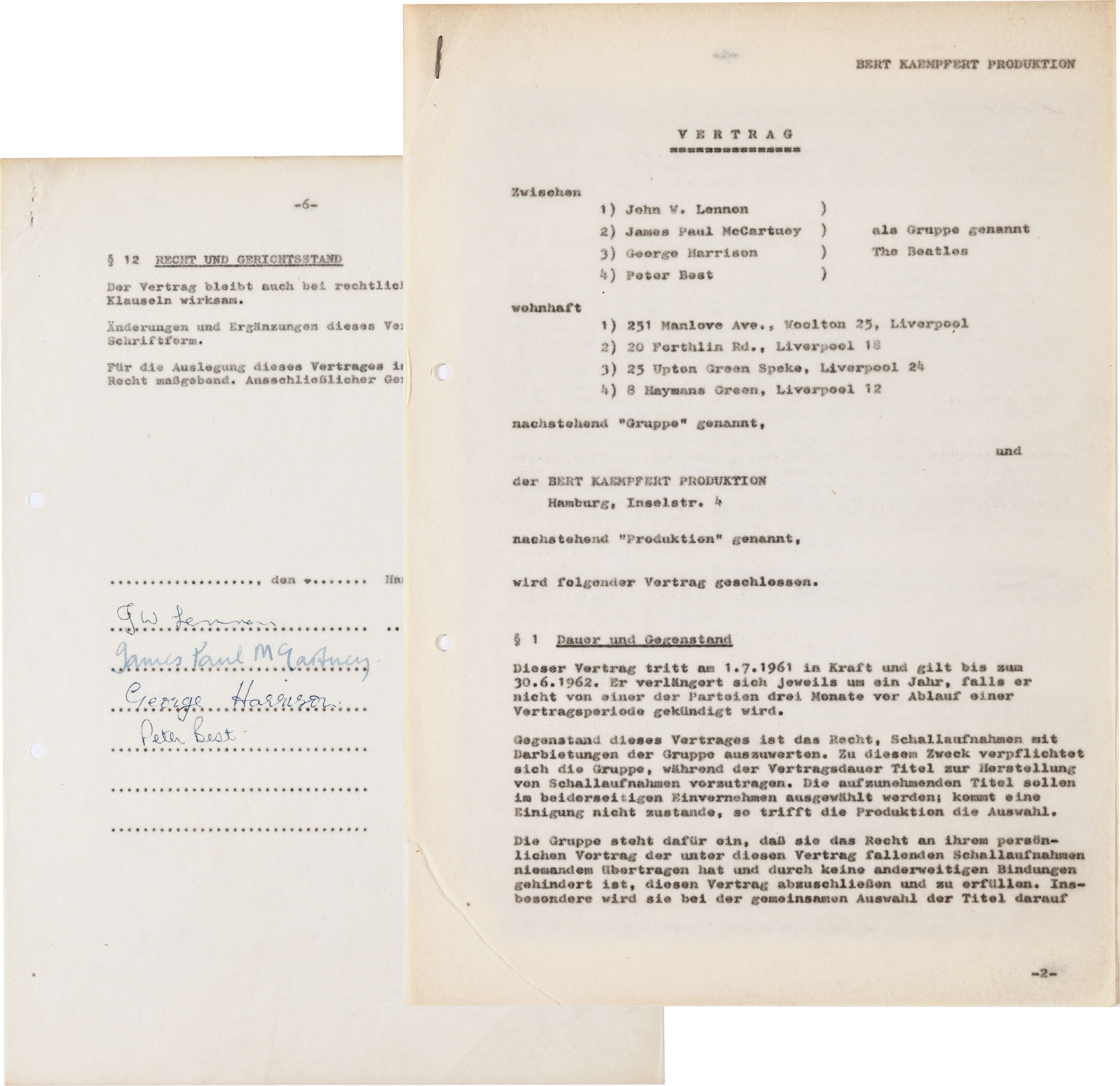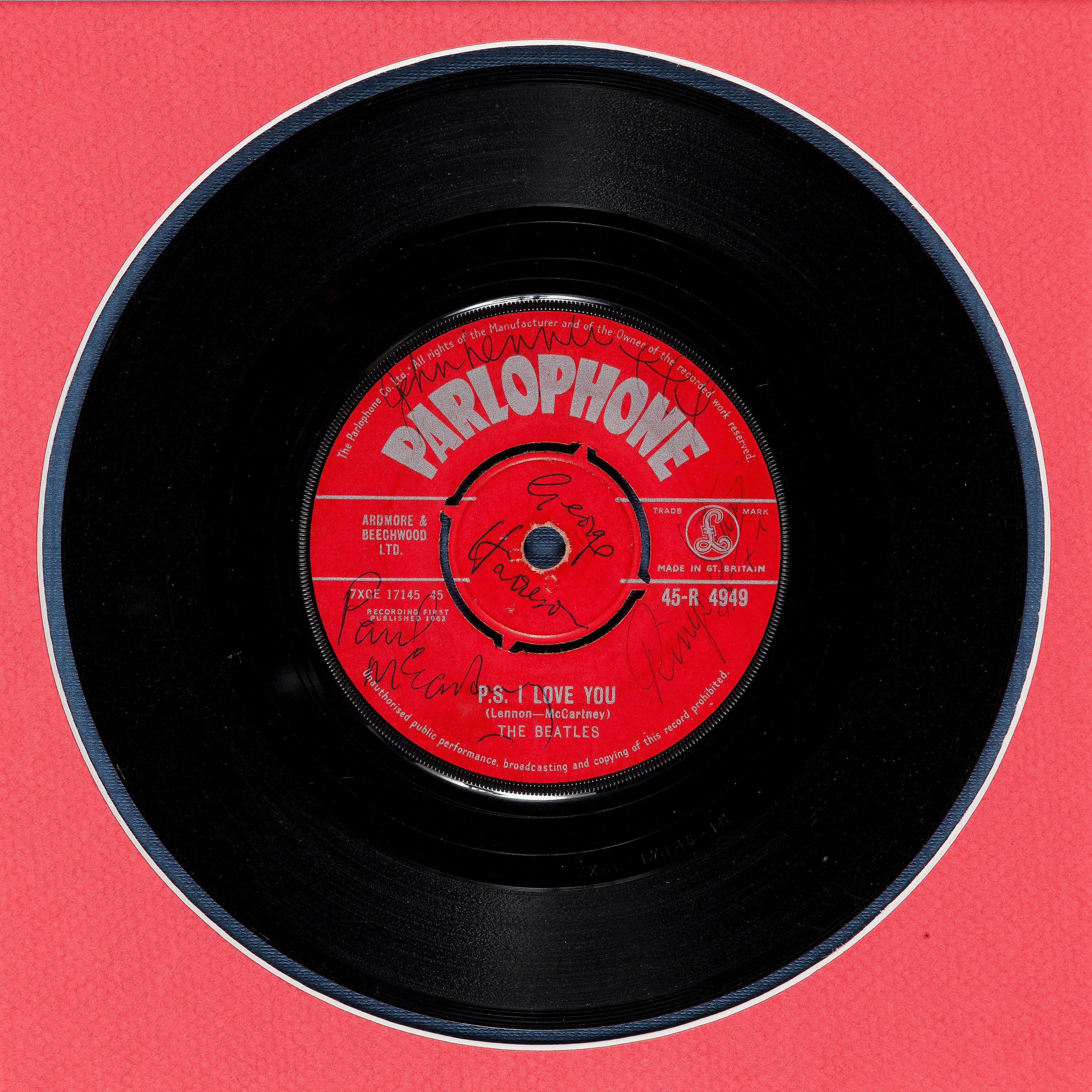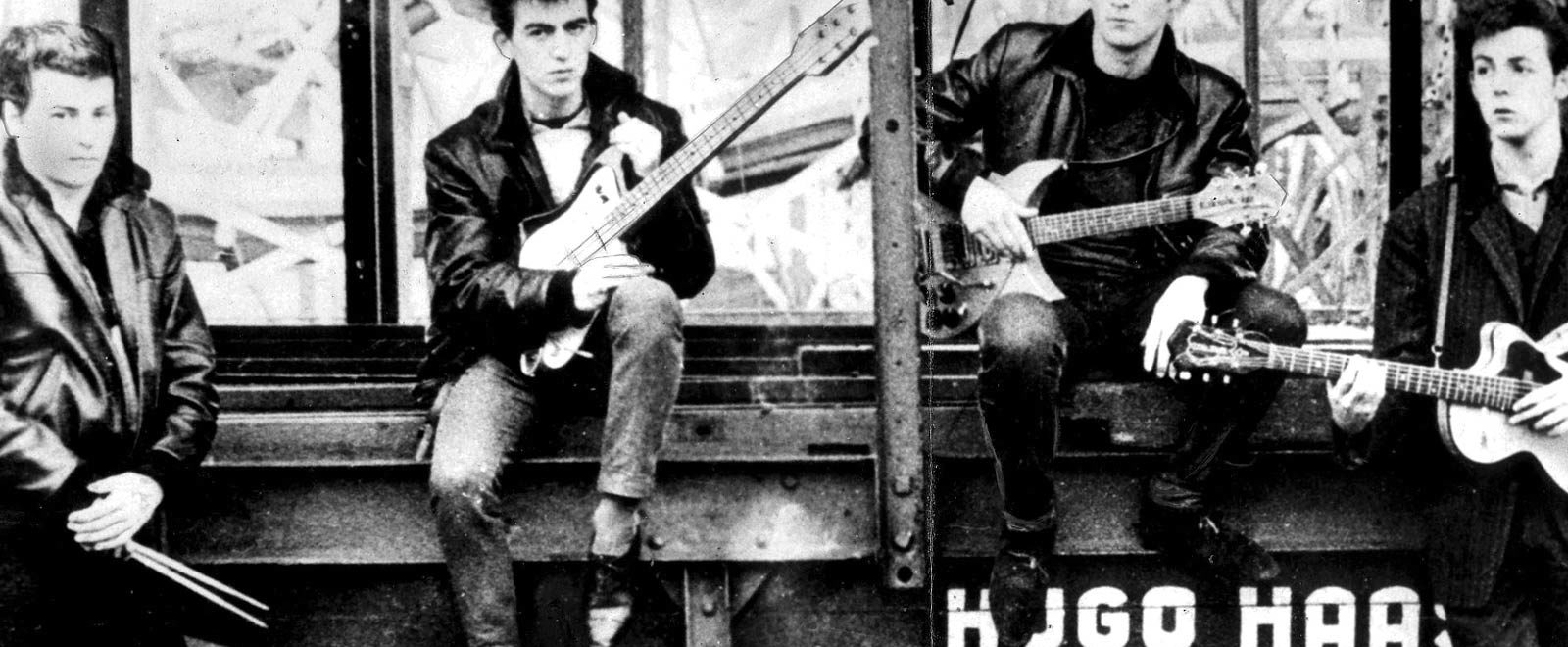SUPER-FAN’S ARCHIVE DATES TO GROUP’S EARLIEST PERFORMANCES IN GERMANY
Editor’s Note: Heritage Auctions will present the Uwe Blaschke Beatles Collection on Sept. 19 in New York. It was assembled over several decades and includes extremely rare and unique Beatles items, many of which were on museum display in Blaschke’s native Germany. Uwe (pronounced “oo-veh”) passed away in 2012. Heritage Auctions consignment director Dean Harmeyer spoke with Blaschke’s friend, colleague and fellow Beatles historian Ulf Krüger about the collection.
By Dean Harmeyer
THE BEATLES HAVE been the subject of countless books, films and television documentaries, more than any other entertainment figures. Clearly there’s something about the Beatles which transcends the 200 or so recorded songs released during their time together – something that continues to feed our desire to know more about them.
A vitally important but lesser known part of the story was set not in Liverpool or London, but in Germany. The Beatles arrived in Hamburg in August 1960, although with a different lineup: John, Paul, George, Stuart and Pete. Wait – five Beatles? And no Ringo?
The story goes like this: In the late 1950s, John Lennon was the leader of a teenage group called the Quarrymen when he first met Paul McCartney. Invited by John to join the group, Paul then introduced John to his young friend George Harrison. Within a short time, the other members of the Quarrymen were left behind and John, Paul and George continued onward as a somewhat ramshackle, three-guitar act.
At Liverpool Art College, John met Stuart Sutcliffe, a gifted art student with a deep love of rock ’n’ roll. At John’s urging, Stuart joined as bassist, and the group was rechristened the Beatles. They soon acquired a booking agent who secured a three-month residency in the booming nightclub scene in Hamburg. Just before setting sail for Germany, Pete Best joined as drummer, completing the lineup for one of the most exciting chapters in the entire Beatles story.
Enlarge

Realized: $93,750
From the Uwe Blaschke Beatles Collection
In Hamburg, the Beatles played up to eight hours a night, six nights a week, to boisterous crowds who demanded that they not only play, but perform. This intense environment transformed the musically developing Beatles into a polished group that returned to Liverpool a few months later as seasoned professionals.
While in Hamburg, Stuart wrote a letter to his mother saying, “We have improved a thousand-fold since our arrival and [booking agent] Allan Williams, who is here at the moment, tells us that there is no group in Liverpool to touch us.” As George would later say of this period, “We had to learn millions of songs because we’d be on for hours. Hamburg was really like our apprenticeship, learning how to play in front of people.”
In Hamburg, the Beatles shared the bill with another Liverpool group whose drummer was Ringo Starr. The following year, Stuart left the band to continue his art studies in Germany, and in 1962, Ringo replaced Pete as the Beatles’ drummer – just before the group recorded their first single for EMI. And while “Love Me Do” marks the beginning of their public career, those two preceding years, when the group played over 1,000 hours on Hamburg stages, are when they became the Beatles – the greatest musical force the world has ever known.
‘PASSIONATE BEATLES FAN’
Ulf Krüger is perhaps the foremost expert of the Hamburg music scene and is author of numerous books about the Beatles and Hamburg. He and Uwe Blaschke collaborated on several important projects which have celebrated the time the Beatles spent in the city:
?The 2006 exhibit “The Hamburg Sound,” which set attendance records at the Hamburg Museum,
?The dedication of the Beatles-Platz in the St. Pauli quarter in Hamburg, where life-size statues of the Beatles serve as a reminder of the bond between city and group, and
?“Beatlemania Hamburg,” a dynamic five-story interactive exhibit about the Beatles’ career, which featured scores of original Beatles items from Uwe Blaschke’s massive collection.
“I first met Uwe Blaschke in the 1990s,” Krüger says. “He was an incredibly passionate Beatles fan from the German city of Minden, and I knew of him and his collection. He was too young to have been a part of the music scene when the Beatles were in Hamburg, but as an adult he was very interested and proud to shine a light on their time in Germany. Beatles scholars the world over are very fortunate that he was here.”
Blaschke was intensely interested in learning everything he could about the Beatles, and as his collection grew, so did his knowledge and expertise, Krüger adds. “He was a graphic artist by trade, and he had a highly developed visual sense. He loved the ‘pop’ design of many of the early Beatles items from the 1960s, and that fueled much of his early collecting. But his keen eye also helped him become an expert in identifying Beatles items. Not only could he tell when Beatles autographs were signed, he could surmise whether it was signed when they were seated, standing or running! He built up an incredible wealth of knowledge to complement his archive over the years.”
Blaschke’s collection includes items from around the world and from all periods of the Beatles’ careers, both as a group and as solo artists. Krüger offered this anecdote about Blaschke’s formidable Beatles collection: “When Genesis Publications asked me to put together the limited edition book B.I.G. – The Beatles in Germany, I suggested we illustrate the book with German Beatles items to give it an additional exotic touch. I already knew who to ask for all the memorabilia – Uwe! He definitely knew everything, and on top of that, he had everything!”
Blaschke’s archive is indeed incredible. Comprising thousands of items, it includes visually appealing collectibles such as dolls from the early days of Beatlemania, movie posters from around the world, and “Yellow Submarine” figurines. There are Beatles wigs, Beatles dresses, Beatles games, Beatles shoes, Beatles wallpaper, and on and on. But it also includes extremely rare, unique and deeply personal items.
There are early business letters from manager Brian Epstein as well as two charming, hand-written postcards from Ringo to his grandmother, sent from Hamburg to Liverpool (and both signed “Love, Richy”). A bar tab from the famous Star-Club in Hamburg is signed by John Lennon – from the very first week the club was open in April 1962. Two Christmas greetings are addressed from George Harrison to childhood best friend Arthur Kelly and his family in Liverpool, dated 1963 and 1964, when the demands of stardom kept the now-famous Beatles away from friends and family during the holidays.
And highlighting the collection is what many collectors may view as the Holy Grail of Beatles documents: the very first recording contract signed by the group in June 1961 for German music producer Bert Kaempfert. The resulting single, “My Bonnie,” was the record that famously brought the Beatles to the attention of Epstein back in Liverpool, which ultimately led to Brian securing their recording contract with EMI. This remarkably preserved contract features the signatures of John, Paul, George and Pete, and is typewritten entirely in German – a language the young Beatles were unable to read at the time.
THE HEART OF BEATLEMANIA
Enlarge

Realized : $25,000
From the Uwe Blaschke Beatles Collection
In addition to being an avid collector and scholar, often appearing on German television as a Beatles commentator, Blaschke was civic-minded.
He designed the John Lennon memorial in Verden, Germany, where parts of Lennon’s 1966 film How I Won The War had been filmed. When unveiled in 2008, it was among the first public sites in Germany to honor a member of the Beatles. At about the same time, he helped establish Beatles-Platz, a plaza in Hamburg that commemorates the city’s importance in Beatles’ history.
“Uwe helped organize the fundraising drive that led to the dedication of the Beatles-Platz at the intersection of the Reeperbahn and the Grosse Freiheit, the streets the then-unknown Beatles walked upon countless times while in Hamburg,” Krüger says. “It remains as a living testament to his pride as a German Beatles fan.”
And when the idea of opening a Beatles museum in Hamburg was first discussed, the founders naturally turned to Blaschke. “Beatlemania Hamburg” was largely built around the Blaschke collection, which accounted for about 90 percent of the items on display. The large-scale exhibition told the story of the Beatles from the early days in Hamburg through their breakup a decade later.
“Uwe had been a big part of celebrating the Beatles in Germany – the festivals, the Hamburg Sound exhibit, the Lennon memorial, and the Beatles-Platz,” Krüger says, “and he was the very heart of Beatlemania Hamburg. As a collector, the museum was like a dream come true for him. Uwe could finally show his entire collection to the world – and in Hamburg, the city that gave the Beatles their start.”
A GLOBAL COLLECTION
The Uwe Blaschke Beatles Collection clearly shows the love felt by Uwe Blaschke for the Beatles. The collection is also vitally important in detailing the group’s phenomenal international appeal. In addition to items originating in England, Germany and the United States, there are fascinating and rare artifacts and mementos from the world over – including France, Holland, Spain, Australia and Poland. Which is fitting, considering that the Beatles were the first global superstars, and who to this day – exactly 55 years after they first left England for Hamburg – are still loved the world over.
DEAN HARMEYER is a consignment director in Heritage Auctions’ entertainment and music department.

